Whetstones have been used to sharpen knives since ancient times. The term whet actually means to sharpen. These stones were used to sharpen various steel objects including sword blades.
Electric sharpeners are still a new concept when in comparison to the stone’s proven method. The decision regarding the ‘whetstone vs electric sharpener’ debate is a matter of user preference.
Here is a bit about both the whetstone and electric sharper to help make your decision a little easier!
Whetstone vs Electric Sharpener: Key Differences
Now, you’ll be learning what matters and what does not as you’re trying to get to the bottom of it.
Using an Electric Knife Sharpener
The electric knife sharpener started out as a grinding wheel that would stand on the floor. It slowly developed into the compact high-end countertop electric sharpeners currently used today.
They usually consist of three grinding phases each phase consisting of two slots. Each slot in a phase sharpens one side of the knife (either the left side or the right side).
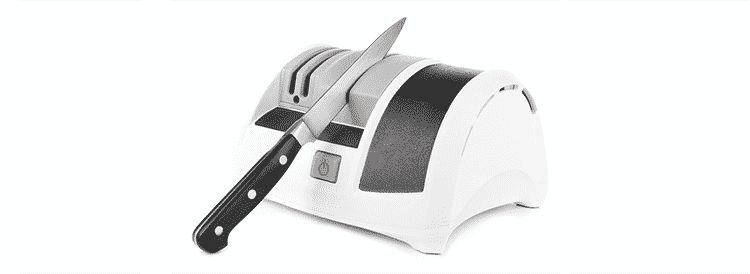
Working Procedures
- Make sure to become familiar with the device
- Plug it into an electric socket
- Turn the device so the on/off button is facing the person about to use it
- Ready the knife or knives that need to be sharpened or honed
- Switch on the machine
- Working from left to right, using each side of each stage lowers the knife to the hilt with the point sticking out the other end into the first slot (usually the coarse mode or 1)
- Lower until the grinding noise is heard
- Pull in easy fluid motions the knife back towards you tilting the knife along with the blade design to ensure the tip is sharpened
- Depending on how blunt the knife is, the sharpening session should be repeated at least twice in all six slots
- Once finished with the first slot (coarse or 1) move to the second one (fine or 2) once done with the second stage move to the final stage (extra fine or 3)
- Turn off the machine
- Test the knife by holding up a piece of paper and slicing it. The blade should glide through the paper
- When satisfied with the sharpness of the knife rinse in warm soapy water before using it
Advantages
- Smooth even clean sharp edges
- It is a lot faster and easier than the manual way
Limitations
- When there is no power then you will not be able to sharpen your dull blades
- It can be a bit abrasive on a knife, especially if not used correctly
- Not very energy efficient
Using a Whetstones
Whetstone is a stone that is used to sharpen blades, it can even be used to sharpen items such as razor blades and scissors. The term whet is usually mistakenly written as wet!
These stones were historically used by soldiers to sharpen their swords, or spears and knives. They can be made from most natural stones but the most commonly used are oil and water stones.
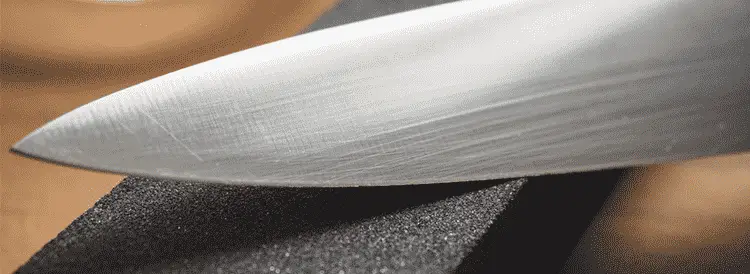
However, there are synthetic stones that are used today, and most who use them report them to be a lot better at sharpening and honing a blade than natural ones.
Whetstones are a more natural way of sharpening a blade, they are also a lot easy to carry and store. They are not dependent on electricity and can also be a lot less harmful to the blade when comparing whetstone vs electric sharpener.
Working Procedures
- Place the stone on a flat surface it is better to use a non-slip grip or mat beneath the stone
- It may be held in the palm of the hand but this can lead to injuries
- Stabilizing the stone with your one hand and run the left side of the knife blade down and across the stone from just above the hilt to the tip. Curving to run with the shape of the blade
- Turn the knife over and repeat the process until the knife is smooth and free of burs and sharp
Advantages
- The user has control over the pressure of the grind
- Less damaging to the knife
- More cost-effective
- Will last longer than an electric or manual knife sharpener
- Does not need electricity to work
- Easier to store
- Easier to take with on trips if the need arises
Limitations
- It takes a bit of experience to use them correctly to make the most our them
- They can be a bit more dangerous to use as far as getting cut goes
Whetstone vs Electric Sharpener: So, What’s the Key?
Both the whetstone and the electric knife sharpener have their pros and cons.
The whetstone is going to last longer and can be used anywhere due to the fact it is not limited by the need for electricity. Plus they are still the choice of most top chefs.
The electric sharpener, however, is a bit easier to use and does not make that horrible nails on a chalkboard sound like a whetstone does. They also get the knife blade honed to the ultimate sharpness making them able to cut through anything with an easy glide.
The electric sharpener also tends to leave fewer burrs on the knife as the polish setting on them is marvelous for buffing these out. Leaving the knife edge as smooth as finely polished silver.
But the whetstone can get the same finished results or really close to the same as the electric sharpener does. It just requires a bit more effort and skill. That is not to say a novice cannot use a whetstone because they are pretty straightforward and the user can have control over the sharpening process.
It is precision honing that takes the skill that anyone can perfect with practice and time. For beginners wanting to learn how to sharpen a nice starting off the electric sharpener is probably best.
This will not only avoid calamities but will also teach them how to test the knife, and get the feel of what it takes to sharpen and hone the knife. Once they are more comfortable with sharpening knives and know how to feel and test the sharpness; giving the manual sharpening procedure a try is an excellent idea.
You never know when you are going to be left in the dark with no power. Deciding between the electric knife sharpener and stone really depends on what it is you are looking for. How often you sharpen your knives whether kitchen knives or throwing knives and the quality of your knives.
Some low-end knives do not really do very well in an electric sharpener. Check your cutlery and see what the recommended sharpening method is and how often they should be sharpened.
If you can afford it having both in the kitchen is a good idea that way you always have access to a knife sharpener.
FAQs
1. Electric sharpener vs whetstone: Are whetstones better than a sharpener?
Ans. It’s actually personal preference but those who are used to whetstones will agree that whetstones are better than electric sharpeners. Avoid the electric grinder-type sharpeners because they chew up the knives and take off too much material. The learning curve for whetstones is also not that hard; it’s all about your muscle memory and maintaining a consistent angle.
2. Are Japanese whetstones better?
Ans. Yes, Japanese whetstones are highly regarded for their consistent particle size for a smooth and refined edge, water-based nature to prevent clogging and overheating, finer grit levels to achieve various levels of sharpness and refinement, and traditional craftsmanship. All of this makes them a preferred choice for many sharpening enthusiasts out there.
3. How long do whetstones last?
Ans. This mainly depends on the grit rating, the type of stone, the frequency of use, and your skill. As long as you keep your stone flat and clean, it will serve you decade after decade and probably a few generations.
4. What is the lifetime of a Japanese whetstone?
Ans. This also depends on several factors such as the stone you have, your sharpening methods, lapping of the stone, and more. Fine stones usually do not last as long as coarse stones.

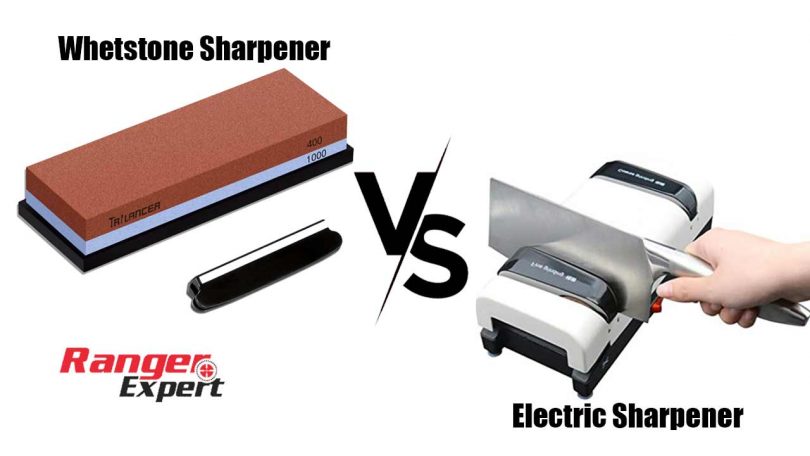



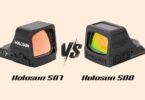
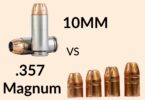


Leave a Comment